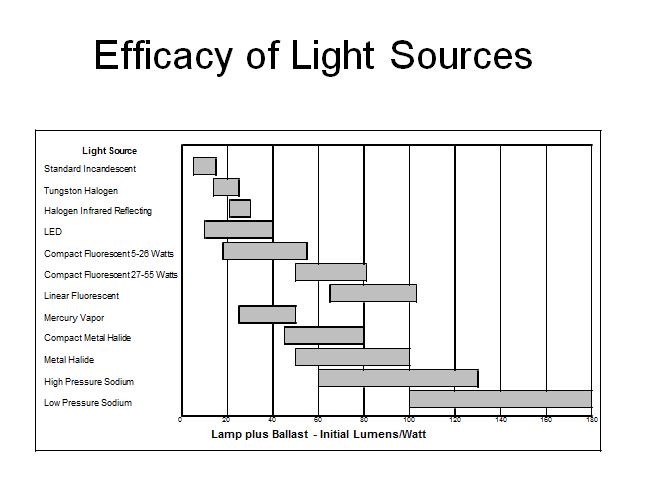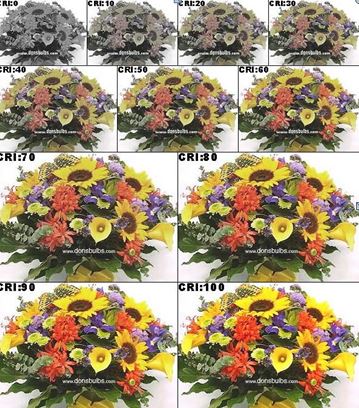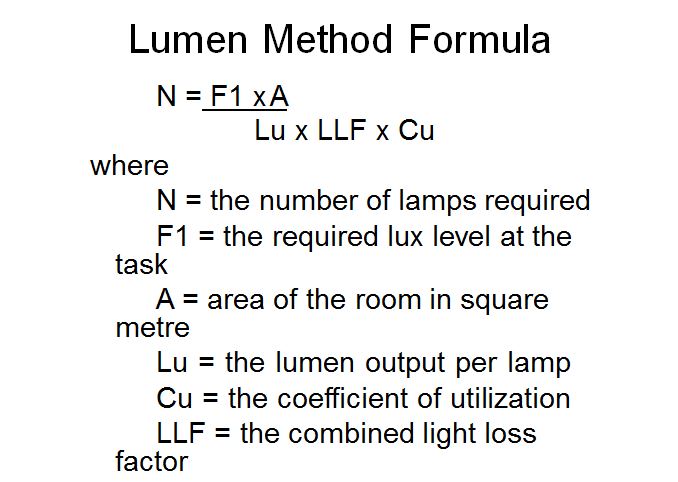INTRODUCTION
Lighting is an important area of opportunity for energy savings, since it is a large fraction of use of electricity in residential and commercial buildings. Lighting energy use is not a big percentage of overall electric energy used in a manufacturing or industrial plant, but it may still be a relatively large number of kilowatt- hours or dollars.
Our oldest lamp is the incandescent lamp, and it is not much different from the first practical lamp that Thomas Edison made.The incandescent lamp contains a resistive filament that is connected directly to the supply voltage. The filament burns white hot, and produces a lot of heat and a little bit of light.Less than 10 percent of the input energy is converted to light.Eventually, even that light energy turns into heat in the space where the lighting is operating.
LIGHT TERMINOLOGY
Lumen – The light output of a lamp is measured in a physical quantity called lumens, abbreviated Lu.
–This value is provided to users as a catalog or product specification.
–For example, a typical 100 watt incandescent lamp has a light output of about 1700 lumens. A typical 1200 mm fluorescent lamp has a light output of about 3000 lumens.
Input – The lamp input is in terms of electrical power and has the units of watts
FACTOR OF SUCCESSFUL LIGHT APPLICATION
- Amount of light required – in Lux (Lu/m2)
- Lumen output of lamps and fixtures – Lu
- Energy efficiency – Efficacy in Lumens/watt
- Color Rendering Index – CRI
- Color Temperature – in Kelvins
- Types of light sources
- Lighting quality
Efficacy of Light Sources

Color temperature

– another physical property of a lamp.
–It is measured in Kelvins, not degrees.
–The color temperature of lamp varies from about 2600 to 2800 Kelvins for an incandescent lamp, to around 6500 K for a daylight lamp.
– The color temperature of a lamp tells us what the light from the lamp looks like.
- A low color temperature – like 2600 K – means that the light from the lamp appears warm in color – meaning it has a red, yellow or orange tint.
- A 4100 K lamp is called a cool white lamp, since it appears cool in color – meaning that it produces stronger green, blue or violet colors.
Color Rendering Index (CRI) –
Another property of lamps that is related to
how we see different colors under its light.
–The CRI is a number between 0 and 100.
- The reference standard is a very special incandescent lamp at a lighting laboratory.
- The light output of this lamp sets the standard for CRI as 100.
–Users can find data on the CRI of lamps in catalog or product specifications.
– Most incandescent lamps have CRIs in the 95 – 100 range.
– The CRI is generally associated with the quality of lighting. The U.S. EPA Green Lights program rates CRI and lighting quality as follows:
– CRI and the color temperature of a particular lamp determine how we see colors under that lamp.
– For any color temperature, the higher the CRI, the more closely we see colors correctly.

Types of Lamps
– Common types of lamps include:
–incandescent
–tungsten halogen (also incandescent)
–compact fluorescent
–full-size fluorescent
–mercury vapor
–metal halide
–high-pressure sodium
–low-pressure sodium
–LED

Ballasts
– Except for incandescent lamps (including tungsten halogen lamps), all other lamps are discharge lamps that require a ballast to start and run the lamps.
–Older ballasts were large, heavy parts called “coil and core” or magnetic ballasts, because they contained a coil of wire wrapped around a heavy iron core.
–Newer ballasts are electronic, and are lighter, cooler, more efficient, and last longer.

LUMEN METHOD

Uses lighting in building?
Lighting by the sunlight is available in every space in a building, even those spaces which have been hardly utilized such as the basement and ground water pit. The sunlight is collected and guided by optical cables to light radiators which are located in intended spaces of a building. The basement has a cistern for water therein to afford a shelter in the case of emergency, while the ground water pit which is also lighted by the conducted sunshine is usable to cultivate fish, plants, and other foodstuffs. The building is annular except for its first floor so that a cylindrical open space is defined there inside and also lighted by the sunlight, thereby introducing the sunlight even into the radially innermost spaces of the sunlight
LIGHTING SYSTEM IN B11 BUILDING
Pendaflour lamp are commonly use in educational building like B11, the light that produce by pendaflour lamp are so suitable for work place and studies. The light temperature is not so high and the light are white in colour that are not disturbing the occupant.
Besides, this lamp is more energy saving due to less electrical use rather that other lamp type.This lamp are been used in corridor , classroom, computer lab, office and toilet.



Leave a comment